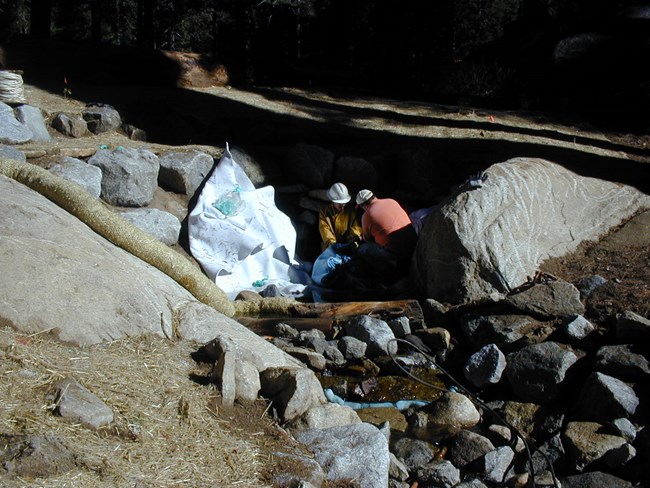|
Development had extensive impacts on the overall giant sequoia ecosystem - soil, water, vegetation, animals, and processes that shaped the forest. 
NPS Photo Wetland and stream habitats may have been affected by leaking sewage where aging sewer lines ran alongside or across streams. Runoff from parking lots and the gas station likely contained petroleum residues, which may have altered wetland and stream habitats. Soils had become more compact, eroded, depleted of organic matter, and altered from natural crumb and granular structures. The natural litter and duff layer was absent from the forest floor. These impacts likely reduced the ability of surface soils to hold water and nutrients and maintain the aeration necessary for root health. Organically rich topsoil is a precious resource; its loss or degradation can have serious long-term consequences for ecosystem health. Footnote: However, the lower density forest seen in the Giant Forest Village today may be similar to the forests that existed prior to the arrival of Euro-Americans, who suppressed fires that would naturally thin out dense stands of young trees. Early visitors to the sequoia groves described an open, "park-like" forest structure. Among other changes, today’s forests that have not sustained fire for nearly a century are more closed, with higher densities of white fir trees that are able to reproduce in shade. |
Last updated: January 27, 2025
